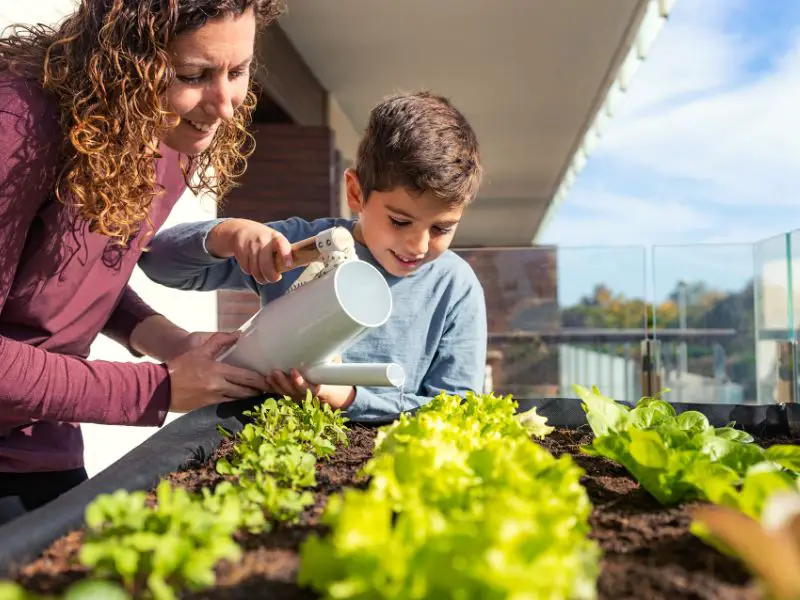Our planet is in a state of unprecedented ecological degradation, and we’re on the brink of losing what we call home. Attempting to fix this problem is simply not enough—we must also change the way we live. On a personal level, changing your behavior and living an eco-friendly lifestyle can be much easier than you might think.
You don’t need to be a green warrior or spend hours at work powering your laptop with solar panels – simply making some small changes in your everyday life can do wonders for the planet. Here is a guide with some ideas on how to be more eco-friendly in a simple and easy way.
Why Is It Essential to Be More Eco-Friendly?
It’s not a secret that the Earth is getting warmer. Every single day the Earth gets closer to the boiling point. The destruction of nature and pollution has caused all these problems.
The most significant issue in the US is pollution, which stems from animal agriculture, excessive plastic consumption, and fossil fuels, leading to increased heat-trapping gases in our atmosphere. If we want to save humanity, we need to become environmentally friendly and work towards preserving our planet.

How Are We Hurting Our Planet?
Humans have a wide range of negative effects on the environment, including plastic pollution, carbon emissions, and deforestation. This has resulted in climate change, land erosion, desertification, poor air quality, massive extinctions, and scarcity of freshwater. The change of ecosystems results in massive migrations, famines or even conflicts over sources of clean water and fertile soil. That’s why we need to be more conscious of the damage we inflict on our planet.
Introducing the Three Distinct Eco-Friendly Categories
1. The Eco-Friendly Business
Transitioning from a conventional farm to an ecologically friendly one is more challenging than signing up for a cap-and-trade agreement.
Everything, from the way items, are advertised and sold, to the way garbage is recycled and whether modifications can be made to a firm’s basic operations, will all contribute to making them more environmentally responsible.
Buying locally isn’t always the most environmentally friendly method to purchase goods, but it can be depending on the product. As an environmentally friendly business, it’s also essential for the business to help their community with their efforts to protect the environment.
Related: Net Zero Emissions: What It Is And Why Businesses Should Care
2. The Eco-Friendly Community
There’s more to life than merely a well-run recycling program in an ecologically conscious community.
Communities devoted to conservation and preservation seek to promote choices such as community playgrounds, green public transit, green construction practices and improving how fossil fuels and other resources are utilized to sustain community services and infrastructure.
3. The Eco-Friendly Citizen
The environmentally conscious individual goes about their daily activities to understand how natural resources are used to generate and sustain the life they lead.

They recycle, preserve water and fuel, and make other decisions that help reduce their influence on the environment and help support businesses attempting to become more environmentally friendly.
Related: The Art of Mindful Consumption, Why Living an Eco-Friendly Lifestyle Makes You Feel Happier
12 Simple Ways on How to Be More Eco-Friendly
1. Save Energy
You may contribute to carbon emissions reduction by conserving energy. When it comes to saving energy at home, there are several options, like shutting off standby appliances, turning down the thermostat, and hanging clothes to dry instead of using a dryer.
If you want to minimize the amount of gas and electricity you consume, try following these energy-saving tips:
- Turn appliances off when they’re not in use. For certain appliances like water heaters, use them only when necessary.
- Try to use more natural light as opposed to artificial lighting.
- Choose energy-efficient light bulbs. Check the Energy Star label to learn which bulbs are energy efficient and which ones aren’t.
2. Recycle or Reduce Waste
Ensure that you’re recycling by placing your garbage in the appropriate containers. Additionally, to avoid waste, attempt to reuse products and objects as many times as possible before throwing them away.

Check out this list of everyday home objects that you would typically toss out but that may be repurposed time and time again for you.
3. Learn to Grow Your Own Produce
By producing your own fruits and vegetables, you can eliminate the need to use pesticides, which contribute to water and air pollution. As a bonus, it will assist in minimizing the amount of fossil fuel consumed in the transportation of produce to stores. And if you don’t have enough time or space to grow a garden, you can focus on buying local and organic as well.

4. Eat Less Meat
Meat production is one of the most significant contributors to climate change, deforestation and the pollution of aquatic ecosystems. By consuming less meat, you may reduce the industry’s negative impact on the environment.
5. Use Eco-friendly Alternatives
When you want to get or replace something, look for online stores that sell eco-friendly solutions.
For example, if you would like to replace your old air conditioner with something more energy-efficient, check online to find out where the most eco-friendly air conditioners are manufactured.
6. Go Paperless
Is it possible to go paperless?
You can start by using digital documents as substitutes for paper. For example, you can use your smartphone or tablet to make notes online instead of in a notebook.

In addition, if you want to retain a file or document if you lose the original, you can upload it to one of the many cloud services instead of sticking with physical copies of these materials. To save paper, print emails or documents only when strictly necessary. You might also request that stores send your receipt by email rather than printing it.
7. Donate Unused Items
If you no longer use a product or wear a piece of clothing, donate it to a charity store or to someone you know who may benefit from it to help minimize waste in the environment. In addition, if you’ve too much something to throw away, consider giving it to a thrift store instead of just throwing it in the trash.

8. Use Public Transportation
Public transportation is a great way to reduce your carbon footprint when available. In addition, public transportation may be an excellent way to lower the money you spend on fuel or even save money if you have to commute every day to work. Furthermore, many companies operate buses or shuttles that can help their employees move around in some cases when there isn’t enough parking space at work for everyone.
9. Save Water
Making a few modest improvements around your house will help you save water in and around your home. Installing a water tank and using rainwater and greywater can help you save water by preventing waste, even if it’s just for watering your yard. Making your lawn greener by putting in water-efficient landscaping can also help conserve water.

10. Shop Smart
It is past time for us to purchase our equipment, electronics, and home appliances with greater consideration. There are solutions accessible on the market that are substantially more energy-efficient and consume significantly fewer resources, whether they’re derived from fuel or electricity. The very basic Energy Star ratings are a terrific place to start when making informed decisions about your household equipment.
11. Know Your Carbon Footprint
We are all contributing to the planet’s gradual decay, yet most of us are unaware. You may now measure your carbon footprint across four categories: transportation, waste, energy, and lifestyle. Knowing your footprint enables you to make appropriate changes to mitigate your effect and emissions and contribute to the planet’s sustainability.
Try this Calculator to find out your footprint on the environment.
12. Be an Advocate for Others
You may want to start a campaign in your community, local schools, or cities about the importance of being environmentally friendly. By advocating to others, we are doing our part, and hopefully, this will influence others to make the appropriate changes within their own lives. By mentioning the noise pollution from cars, and the constant need for oil and gas, we can educate others about how this influences their daily lives in all aspects of their lives, ultimately sparking them to do something about it.

Author’s Note
There are many areas in which we can improve our eco-friendly practices. One way is to take a step back and appreciate the natural beauty surrounding us. Another is to reduce our environmental impact. Our duty is to take care of the only place we call home. I hope these tips offered some insight into the many ways you can reduce your carbon footprint and become an eco-friendly citizen.


1 thought on “How to Be More Eco-Friendly: 12 Simple and Effective Ways”